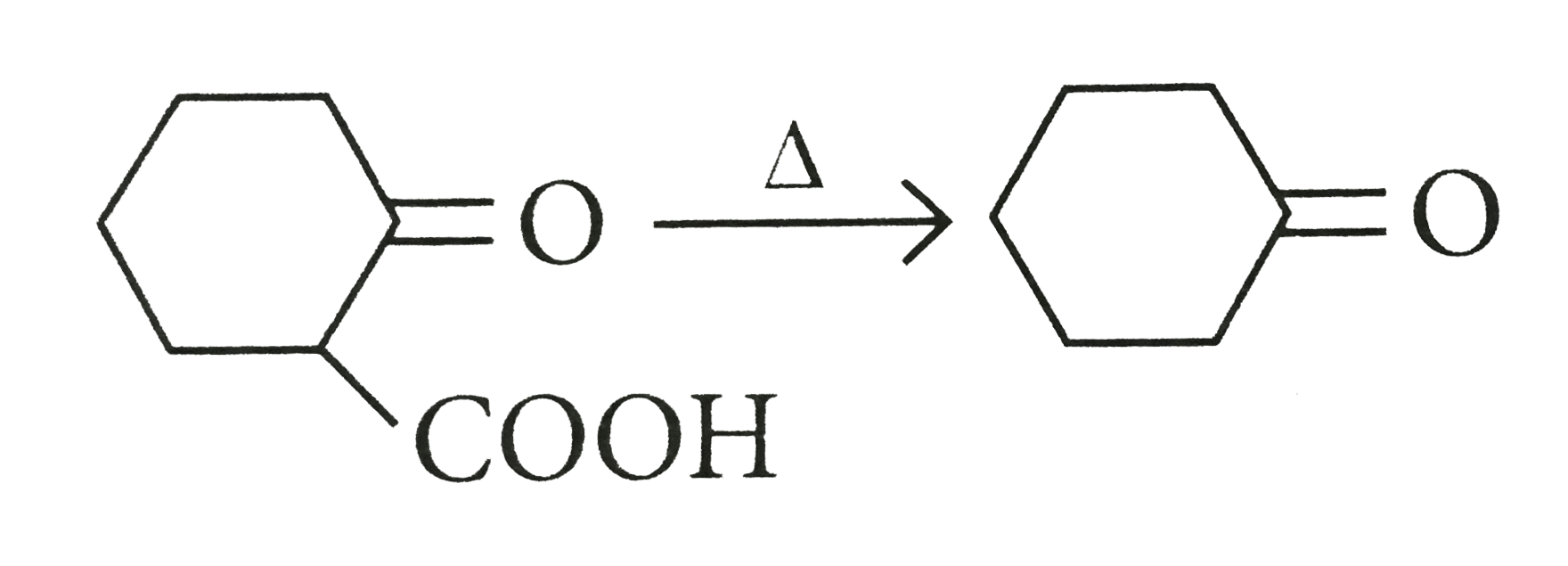Why is CH2=CH−COOH a stronger acid than CH3CH2COOH?
The correct Answer is:A
To understand why prop-2-enoic acid (CH₂=CH-COOH) is a stronger acid than propanoic acid (CH₃CH₂COOH), we can analyze the structural and electronic factors that influence acidity.
1. Identify the Structures:
- Prop-2-enoic acid has the structure CH₂=CH-COOH, which contains a double bond between the first two carbon atoms.
- Propanoic acid has the structure CH₃CH₂COOH, which contains only single bonds.
2. Hybridization of Carbon Atoms:
- In prop-2-enoic acid, the carbon atom adjacent to the carboxylic group (the α-carbon) is sp² hybridized due to the presence of the double bond.
- In propanoic acid, the α-carbon is sp³ hybridized.
3. Electronegativity Consideration:
- sp² hybridized carbon atoms are more electronegative than sp³ hybridized carbon atoms. This is because sp² hybridized carbon has a higher s-character (33%) compared to sp³ hybridized carbon (25%).
- The increased electronegativity of the sp² carbon in prop-2-enoic acid allows it to better stabilize the negative charge that develops when the acid donates a proton (H⁺).
4. Proton Donation:
- The ability of an acid to donate a proton is a key factor in its strength. In prop-2-enoic acid, the greater electronegativity of the α-carbon facilitates the release of the proton from the carboxylic group.
- In contrast, in propanoic acid, the sp³ hybridized α-carbon does not stabilize the negative charge as effectively, making it less favorable for the acid to donate a proton.
5. Conclusion:
- Therefore, due to the higher electronegativity of the α-carbon in prop-2-enoic acid, the release of the proton is easier compared to propanoic acid. This makes prop-2-enoic acid a stronger acid than propanoic acid.
Final Answer:
Prop-2-enoic acid (CH₂=CH-COOH) is a stronger acid than propanoic acid (CH₃CH₂COOH) because the α-carbon in prop-2-enoic acid is sp² hybridized, making it more electronegative and better able to stabilize the negative charge after proton donation, thus facilitating the release of the proton.
- Prop-2-enoic acid has the structure CH₂=CH-COOH, which contains a double bond between the first two carbon atoms.
- Propanoic acid has the structure CH₃CH₂COOH, which contains only single bonds.
- In prop-2-enoic acid, the carbon atom adjacent to the carboxylic group (the α-carbon) is sp² hybridized due to the presence of the double bond.
- In propanoic acid, the α-carbon is sp³ hybridized.
- sp² hybridized carbon atoms are more electronegative than sp³ hybridized carbon atoms. This is because sp² hybridized carbon has a higher s-character (33%) compared to sp³ hybridized carbon (25%).
- The increased electronegativity of the sp² carbon in prop-2-enoic acid allows it to better stabilize the negative charge that develops when the acid donates a proton (H⁺).
- The ability of an acid to donate a proton is a key factor in its strength. In prop-2-enoic acid, the greater electronegativity of the α-carbon facilitates the release of the proton from the carboxylic group.
- In contrast, in propanoic acid, the sp³ hybridized α-carbon does not stabilize the negative charge as effectively, making it less favorable for the acid to donate a proton.
- Therefore, due to the higher electronegativity of the α-carbon in prop-2-enoic acid, the release of the proton is easier compared to propanoic acid. This makes prop-2-enoic acid a stronger acid than propanoic acid.
Prop-2-enoic acid (CH₂=CH-COOH) is a stronger acid than propanoic acid (CH₃CH₂COOH) because the α-carbon in prop-2-enoic acid is sp² hybridized, making it more electronegative and better able to stabilize the negative charge after proton donation, thus facilitating the release of the proton.
Similar Questions
Knowledge Check
Which of the following is the correct orderr of acidity of carboxylic acids?
(i) Cl3CCOOH>Cl2CHCOOH>ClCH2COOH
(ii) CH3CH2COOH>(CH3)2CHCOOH>(CH3)3CCOOH
(iii) F2CHCOOH>FCH2COOH>ClCH2COOHA(i) and (ii)B(ii) and (iii)C(i) and (iii)D(i), (ii) and (iii)
Distinguish between CH3CH2COOH and HCOOH.
View SolutionDistinguish between CH3CH2COOH and HCOOH.
View SolutionIn the given reaction CH3CH2CH=CHCH3X−−→CH3CH2COOH+
CH3COOH
The X is
View SolutionGive IUPAC name of : CH3−CH2−COOH.
View SolutionConsider the following reactions.
I. CH2=CHCOOHΔ−−→CH2=CH2
II.
III. CH3CH(COOH)2Δ−−→CH3CH2COOH
In which cases, parent compound loses its functional group in preference?
View SolutionThe correct order of acidic strength of the following is
(I) Oxalic acid HOOC−COOH
(II) Malonic acid
HOOC−CH2−COOH
(III) Succinic acid
HOOC−(CH2)2−COOH
(IV) Glutaric acid
HOOC−(CH2)3−COOH
View SolutionCH3COOH is weaker acid than H2SO4. It is due to
View Solution
